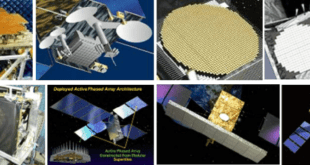The rapid evolution of wireless consumer electronics, from smartphones and smartwatches to IoT devices and wearables, has ushered in an era where seamless connectivity and high performance are non-negotiable. Ensuring optimal wireless functionality requires an intricate interplay of cutting-edge technologies, robust testing methodologies, and innovative measurement systems. Over-the-Air (OTA) testing …
Read More »5G Standards require compliant testing and new Test and Measurement solutions for Assurance
The rollout of 5G technology has revolutionized wireless communication, offering unprecedented speed, ultra-low latency, and massive device connectivity. With speeds up to 100 times faster than existing cellular connections and latency reduced to the 1-millisecond range, 5G even surpasses the capabilities of physical fiber optics. These advancements drive innovation across …
Read More »Precision Motion Control Systems: A Key Enabler of Modern Technology
Precision Motion Control: The Backbone of High-Tech Innovation Discover how precision motion systems quietly power the technology that shapes our world—from robotics to aerospace and beyond. In the world of advanced engineering, precision is paramount. Whether in robotics, aerospace, medical devices, or industrial automation, the ability to control motion with …
Read More »Evolution of Consumer Electronics Product Design and Development
The world of consumer electronics design and development has undergone a monumental transformation, evolving from rudimentary approaches to highly integrated and user-centric processes. From the early days of analog devices like radios and televisions to today’s interconnected digital ecosystems, the journey of consumer electronics has been defined by technological innovation, …
Read More »Advanced Millimeter-Wave Testing and Measurements for 5G, Ka-Band Satellites, Military, and Automotive Radar Systems
As technology advances and demand for faster, more reliable communication systems grows, millimeter-wave (mmWave) frequencies are becoming increasingly essential in various industries. Millimeter-wave (mmWave) technologies are revolutionizing several sectors, including 5G cellular communications, Ka-band satellite communications, and military and automotive radar systems. These high-frequency bands, typically ranging from 30 GHz …
Read More »Exploring the Fascinating World of Microwave Components and Devices: An Overview
Microwave technology is at the heart of modern communication systems, radar technology, satellite communication, and even advanced medical devices. Operating in the frequency range of 300 MHz to 300 GHz, microwave components and devices have unique characteristics that make them essential in high-frequency applications. From enabling wireless communication to powering …
Read More »Beyond the Blur: How Ultrahigh‑Definition Quantum dots (QDs) Displays Are Revolutionizing Wearable Tech
Ultrahigh-Definition Quantum Dot Displays: Redefining the Wearable Experience Breakthrough QD displays are delivering cinema-grade clarity to the smallest screens—ushering in the era of seamless, invisible interfaces. The Invisible Interface Revolution Imagine reading a novel on a postage‑stamp screen while jogging—this encapsulates the optical engineering nightmare in today’s AR glasses and …
Read More »The Global 5G Testing Equipment Market: Trends, Drivers, and Regional Analysis
The Global 5G Testing Equipment Market: Enabling the Future of Seamless Connectivity From smart cities to autonomous vehicles, 5G testing tools are the unsung heroes driving performance, precision, and global rollout success. As the 5G revolution transforms industries and reshapes global connectivity, the demand for 5G testing equipment is soaring. …
Read More »Antenna Technologies Shaping the Future of Space-Based Communications
Antenna Technologies Shaping the Future of Space-Based Communications From Earth to deep space, antennas are the invisible infrastructure powering tomorrow’s communication networks. Space-based communications have revolutionized how we connect, navigate, and explore. The realm of space-based communications is undergoing a significant transformation, driven by advancements in antenna technologies. From enabling high-speed …
Read More »Hybrid Propulsion in Military Land Vehicles: The Future of Armored Mobility
Hybrid Military Vehicles: Quiet, Powerful, and Ready for Future Combat Discover how hybrid propulsion is revolutionizing armored warfare with stealth, efficiency, and future-ready tech. Modern military operations demand armored vehicles that are not only heavily protected and armed but also fuel-efficient, stealthy, and adaptable to evolving battlefield conditions. While traditional …
Read More » International Defense Security & Technology Your trusted Source for News, Research and Analysis
International Defense Security & Technology Your trusted Source for News, Research and Analysis






